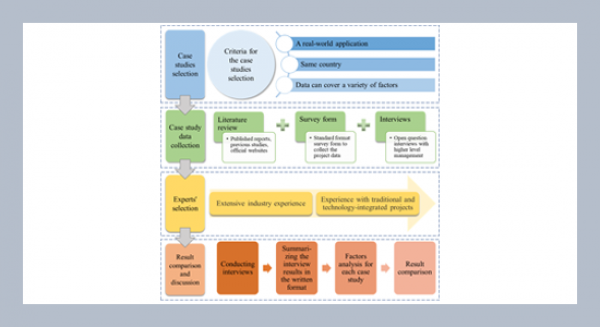R. Arokiadass*, K. Palaniradja, and N. Alagumoorthi Department of Mechanical Engineering, Pondicherry Engineering College, Puducherry, India
Download Citation:
|
Download PDF
Optimization of process parameters is important to achieving high quality in the machining process, especially where more complex multiple performance optimization is required. The present investigation focuses on the multiple performance optimization on end milling characteristics of LM25 Al/SiCp metal matrix composites. The process parameters used for the experiments were spindle speed, feed rate, depth of cut, and percentage weight of silicon carbide. Experiments were carried out according to response surface methodology (RSM). Statistical models were developed for tool flank wear and surface roughness. These models were used for optimization by which the optimum parameter settings were obtained with a view to minimizing the responses. The Non-dominated Sorting Genetic Algorithm (NSGA-II) tool was used to optimize the cutting conditions, yielding a non-dominated solution set that is reported here.ABSTRACT
Keywords:
Metal matrix composites; end milling; modeling; optimization; non-dominated sorting genetic algorithm (NSGA-II).
Share this article with your colleagues
[1] Manna, A. and Bhattacharyya, B. 2003. A study on machinability of Al/SiC-MMC. Journal of Material Processing Technology, 140: 711-716.REFERENCES
[2] Kevin Chou, Y. R. and Jie Liu. 2005. CVD diamond tool performance in metal matrix composite machining. Journal of Surface and Coatings Technology, 200: 1872-1878.
[3] Suresh Kumar Reddy, N., Shin, K. S., and Minyang, Y. 2008. Experimental study of surface integrity during end milling of Al/SiC particulate metal-matrix composites. Journal of Material Processing Technol, 201: 574-579.
[4] Li, X. and Seah, W. K. H. 2001. Tool wear acceleration in relation to workpiece reinforcement percentage in cutting of metal matrix composites. Journal of Wear 2472, 161-171.
[5] Ozben, T., Kilickap, E., and Cakir, O. 2008. Investigation of mechanical and machinability properties of SiC particle reinforced Al-MMC. Journal of Mater Process Technol, 198: 220-225.
[6] Kaye, J. E., Yan, D. H., Popplewell, N., and Balakrishnan, S. 1995. Predicting tool flank wear using spindle speed change. Journal ofMach. Tools Manufact, 35: 1309-1320.
[7] Srinivas, N. and Kalyanmoy, D. 1994. Multiobjective optimization using non-dominated sorting in genetic algorithms. Journal of Evol. Comp, 2(3): 221-248.
[8] Kanagarajan, D., Karthikeyan, R., Palanikumar, K., and Davim, J. P. 2008. Optimization of electrical discharge machining characteristics of WC/Co composites using Non-dominated sorting genetic algorithms (NSGA-II) . Journal of Advd Mfg Technol, 36: 1124-1132.
[9] Kuriakose, S. and Shunmugam, M. S. 2005. Multi-objective optimization of wire electro discharge machining process by non-dominated sorting genetic algorithm. Journal of Materials Processing Technology, 170: 133-141.
[10] Raghuwanshi, M. M. and Kakde, O. G. 2004. Survey on multi-objective evolutionary and real coded genetic algorithm. In: Proceedings of the 8th Asia-Pacific Symposium on Intelligent and Evolutionary Systems, Cairns, Australia. 150-161.
[11] Akundi, S. V. K., Simpson, T. W., and Reed, P. M. 2005. Proceedings of ASME Computers and Information in Engineering Conference, Paper No: DETC 2005/DAC-84905, California, USA.
[12] Boothroyd, G. 1983. “Fundamentals of Metal Machining and Machine Tools”. McGraw-Hill Book Co., London.
[13] Juneja, B. L. and Sekhon, G. S. 2000. “Fundamentals of Metal Cutting and Machine Tools”. New Age International (P) Limited Publishers, India.
[14] Subramanian, R., Subramanian, K., and Subramanian, B. 2009. Application of a fast and elitist multi-objective genetic algorithm to reactive power dispatch. Serbian Journal of Electl. Engg, 6(1): 119-133.
ARTICLE INFORMATION
Received:
2012-06-08
Revised:
2012-12-07
Accepted:
2013-02-22
Available Online:
2013-09-01
Arokiadass, R., Palaniradja, K., Alagumoorthi, N. 2013. Bi-Performance optimization of end milling characteristics of Al/SiCp composites using NSGA-II. International Journal of Applied Science and Engineering, 11, 251–266. https://doi.org/10.6703/IJASE.2013.11(3).251
Cite this article:















